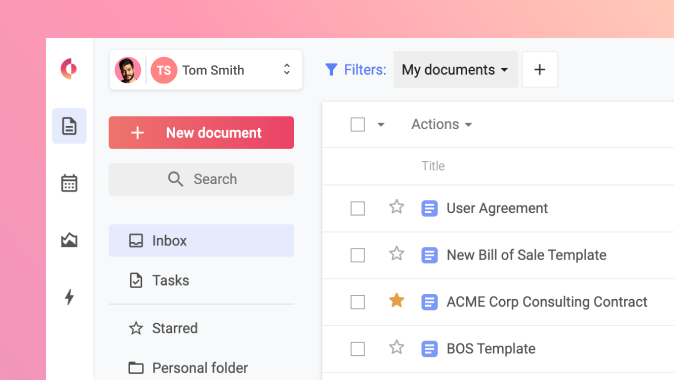Key Concepts in Contract Lifecycle Management
From the first draft to the final signature, contracts can be challenging to manage throughout their lifecycle. Ensuring every aspect of the document is in order, from the wording to the benefits of the relationship, is critical for any business. Managing contracts well is a valuable skill that takes effort. These three things are key to remember when managing a contract lifecycle.
Clarity is Key
Before a contract is even drafted, ensuring there is clarity within an organization provides consistency for a business as well as the third party. What are the company needs and how is the contract an avenue for fulfilling them? Looking back through past business cases and other research are helpful to develop a cadence for contract creation.
Whether through team collaboration or research, defining what a contract is intended to do, who is involved, how the terms affect a business, and how it will impact the other party is the first step. Balancing the risk and reward, as well as the likelihood of any risks, are all essential to maintaining compliance. From there, drafting a contract with precise and thorough language will help terms be easily identifiable and keep all deadlines clear. With clarity throughout a document and as few loopholes as possible, both sides can know exactly what is expected of them when they make the agreement.
With a platform, managing this clarity is much easier through templates and approval workflows. Teams can work directly from preset templates so there’s no need to write a new document every time, and approval workflows ensure that all parties are included and have visibility into every contract created.
Change Can Be Good
Even with extensive research and thought put into the draft, most contracts go through some sort of negotiation. Terms will need to be redlined and edits made. Often this is where the time spent on a document begins to increase and communication breaks down. Being flexible, easily adaptable, and able to negotiate any changes without time-lapse or siloed communication is critical for an organization’s success in streamlining the negotiation process. Properly managed changes can actually be a catalyst for good in a company, whether it’s through adjustments to the terms in the template or more beneficial terms for both sides.
Technology is one way to effectively manage change. Communication can only go so far before channels are separated and efficiency lags behind. A contract lifecycle management platform that keeps people, processes, and documents all in one place is the best way to ensure that changes are indeed managed well for an organization.
Reduce, Reuse, Recycle
Sustainability and environmental responsibility are important issues gaining traction among corporate leadership around the world. Employees and consumers alike are beginning to expect environmental awareness from their workplaces and businesses they purchase from. One way to reduce paper consumption and environmental impact is through a contract lifecycle management platform that eliminates the need to print contracts ever again.
Recycling contracts goes beyond the environment, however. When a contract comes up for termination or renewal, there’s an opportunity to “recycle” the contract—either into a standard template or a continued relationship with that vendor.
Contract management can be a complex and subtle process—drafting, negotiating, renegotiating, signing, adjusting, and renewing contracts. A contract management platform should make the contract lifecycle much more simple and streamlined.



